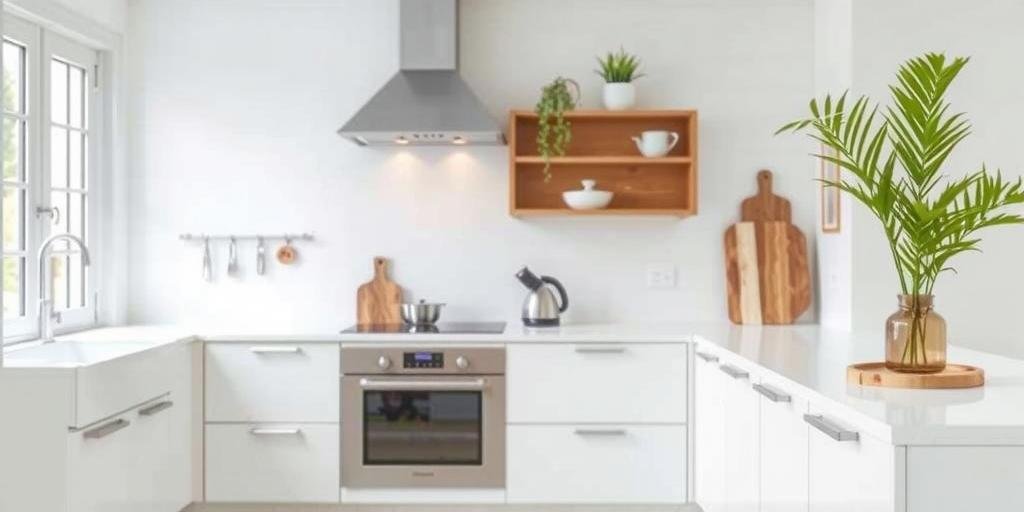White kitchen cabinets add a bright, clean aesthetic to any kitchen, but they can quickly show dirt, grease, and stains. Keeping them looking pristine requires the right techniques and cleaning solutions. This guide will walk you through the best methods to clean white kitchen cabinets effectively and safely.
Why White Cabinets Need Special Care
White surfaces highlight every smudge, fingerprint, and grease splatter, making regular cleaning essential. Over time, dirt buildup can dull the finish, and improper cleaning methods may damage the paint or laminate. Follow these steps to maintain their brightness.
Materials Needed for Cleaning White Cabinets
Before starting, gather these supplies:
- Mild dish soap or a gentle cleaner
- White vinegar (for tough stains)
- Baking soda (for scrubbing)
- Microfiber cloths or soft sponges
- Warm water
- Toothbrush (for crevices)
- Olive oil or mineral oil (for wood cabinets)
Step-by-Step Cleaning Process
1. Remove Dust and Loose Debris
Start by wiping down cabinets with a dry microfiber cloth to remove dust and crumbs. This prevents scratching when applying cleaning solutions later.
2. Prepare a Gentle Cleaning Solution
Mix 1 tablespoon of mild dish soap with 1 quart of warm water. Avoid harsh chemicals like bleach, which can yellow white finishes.
3. Wipe Down Cabinet Surfaces
Dip a soft cloth or sponge into the solution, wring it out well, and gently wipe cabinet doors and frames. Work in small sections, rinsing the cloth frequently.
4. Tackle Tough Stains and Grease
For stubborn grease or stains:
- Make a paste of baking soda and water and apply it to the stain.
- Gently scrub with a soft toothbrush, then wipe clean.
- For grease buildup, use a 50/50 mix of white vinegar and water.
5. Dry and Polish
After cleaning, wipe cabinets with a dry microfiber cloth to prevent water spots. For wood cabinets, apply a small amount of olive oil or mineral oil to a cloth and buff for shine.
Cleaning Frequency Recommendations
| Cabinet Area | Cleaning Frequency |
|---|---|
| Exterior surfaces | Weekly |
| Handles and knobs | Bi-weekly |
| Deep cleaning | Monthly |
Common Mistakes to Avoid
- Using abrasive sponges – These can scratch the finish.
- Over-wetting surfaces – Excess water can damage wood or laminate.
- Skipping drying – Moisture left behind can cause streaks or warping.
FAQ: Cleaning White Kitchen Cabinets
How do I remove yellowing from white cabinets?
Yellowing can result from grease buildup or sunlight exposure. Try a baking soda paste or a hydrogen peroxide solution (1 part peroxide to 5 parts water). Test in an inconspicuous area first.
Can I use magic erasers on white cabinets?
While magic erasers can remove tough stains, they are mildly abrasive. Use them sparingly and avoid excessive scrubbing to prevent damage.
How do I prevent future stains on white cabinets?
Wipe spills immediately, avoid touching cabinets with dirty hands, and consider applying a protective wax or sealant for easier cleaning.
Are homemade cleaners safe for all cabinet types?
Most homemade solutions (like vinegar or baking soda) are safe for painted, laminate, or wood cabinets. However, avoid vinegar on natural stone surfaces near cabinets, as it can etch the stone.
Final Tips for Maintaining White Cabinets
Regular upkeep is key to keeping white cabinets looking their best:
- Dust frequently to prevent buildup.
- Use placemats or liners in high-splash areas.
- Consider touch-up paint for chips or scratches.
With these steps, your white kitchen cabinets will stay bright and beautiful for years to come!

